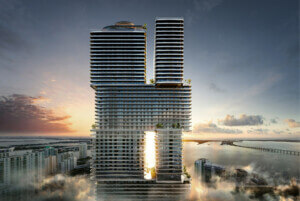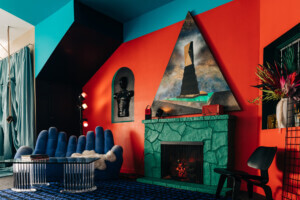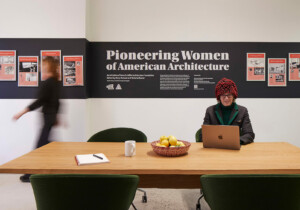When outgoing executive editor Aaron Seward handed me the reins to the Southwest edition of The Architect’s Newspaper, it was an exciting moment. I have always had an affinity for the southwest: Its specificity of place has a different kind of attraction than the over-run, predictable architecture of larger cities. Some of this is the freedom and experimentation that open space offers, but there is also a local and environmental sensitivity that runs deep.
The architecture of the southwest has its own agenda, often very linked to the natural environment. Fort Worth’s Kimbell Art Museum by Louis Kahn with its new pavilion by Renzo Piano derives much of its form through a response to the searing (and art-illuminating) Texas sun. New Age constructions of places like Crestone, Colorado, and Taos, New Mexico, embody the mystique of the desert in their Zen centers and Buddhist temples, while the passive solar technologies and houses made of tires take on their environments with a radical respect for nature.
These aspirations are not particular to the southwest, but the southwest does them very well.
Which is why two recent projects piqued my interest. The first is the recently opened Inde/Jacobs gallery by Swedish architects Claesson Koivisto Rune (CKR) in Marfa, Texas. The building takes cues from its context, which is the legacy of minimalist art. The solution is a smart and elegantly detailed series of galleries and outdoor spaces that produce effects inspired by the likes of Donald Judd. Gallery walls float above a concrete floor, while on the exterior, windows and door shrink, making the building appear smaller.
To some, CKR’s approach might seem slightly fetishized and lacking the profundity of Judd et al., but the nuance of such a strategy at least partially captures the unique spirit of the place and delivers a narrative through effects, just like the minimal works that are displayed in its gallery.
Across the West Texas border, in Santa Fe, New Mexico, a different story is unfolding. Another world-class institution, SITE Santa Fe, recently unveiled a new building that includes additional galleries, a 250-seat auditorium and event space, educational facilities, and a “SITElab.” The design architects are New York’s prolific SHoP Architects. It is a peculiar choice, given that ShoP’s best building is the Barclay’s Center in Brooklyn and its specialty is developer-driven condominium towers.
Of course there are two philosophies to hiring architects: Some prefer locals, while others bring in fresh blood. In places that don’t have tons of high-profile architecture, either choice can produce interesting architecture.
The SHoP design, however, does not do its incredible context justice. The building is essentially the fourth and fifth floors of a Midtown Manhattan super-tall luxury building, cropped on the corner to look like L.A.’s Broad Museum, and cloaked in a perforated metal skin that would be more at home in Manhattan than even the most industrial parts of Santa Fe.
While it is hard to refute the designers’ preconstruction claim about how the skin will filter light, it is not hard to see the vapid metaphor that they have tried to incorporate in the facade. According to a press release, it is derived from “Navajo weaving patterns,” which translates to triangles.
Of course, this is what we could have expected from SHoP, which hasn’t really completed a high-profile cultural project at this level since the early 2000s. Perhaps it is a product of scaling up and scaling back down, or maybe it is an attempt to bring New York to Santa Fe. But with a place that has a natural and cultural environment so rich for architectural intervention, the new SITE Santa Fe leaves a lot to be desired. It has none of the desert weirdness or phenomenological respect for nature that other great southwest architecture has.
Richard Gluckman’s original SITE building renovation kept a tastefully low profile, deferring to the remote locale. Greg Lynn’s bubble entrance was part alien, part trailer—a bizarre desert object. As for the new SITE, perhaps it is just SHoP being SHoP, and bringing a little slice of glitzy, New York-caliber, totalizing gentrification to the sublime desert landscape. Paradoxically, that might be super interesting, but I doubt it.










